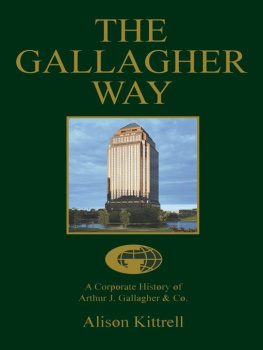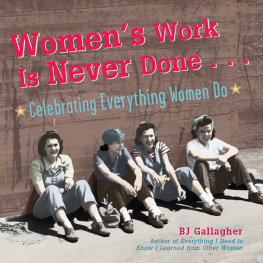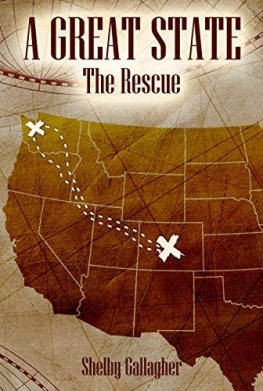THE GALLAGHER WAY
A Corporate History of
Arthur J. Gallagher & Co.
Alison Kittrell
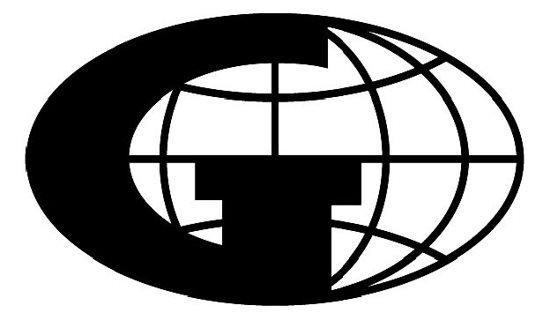
iUniverse, Inc.
Bloomington
The Gallagher Way
A Corporate History of Arthur J. Gallagher & Co.
Copyright 2005, 2012 Marketing Counsel, Inc.
All rights reserved. No part of this book may be used or reproduced by any means, graphic, electronic, or mechanical, including photocopying, recording, taping or by any information storage retrieval system without the written permission of the publisher except in the case of brief quotations embodied in critical articles and reviews.
iUniverse books may be ordered through booksellers or by contacting:
iUniverse
1663 Liberty Drive
Bloomington, IN 47403
www.iuniverse.com
1-800-Authors (1-800-288-4677)
Because of the dynamic nature of the Internet, any Web addresses or links contained in this book may have changed since publication and may no longer be valid. The views expressed in this work are solely those of the author and do not necessarily reflect the views of the publisher, and the publisher hereby disclaims any responsibility for them.
Original layout and design by Wildenradt Design Associates www.wda25.com
ISBN: 978-0-595-37114-3 (sc)
ISBN: 978-0-595-81514-2 (e)
Printed in the United States of America
iUniverse rev. date: 12/27/2011
Contents
Chapter 1
The Immigrant Dream
Chapter 2
The Birth Of A Company
Chapter 3
The Next Generation
Chapter 4
With You Or Without You
Chapter 5
The Lords Work
Chapter 7
The Wild, Wild 70s
Chapter 8
Going Public
Chapter 9
An Expanding Family
Chapter 10
Avenues Of Growth
Chapter 11
The Challenge Of The Future
Chapter 12
Boiling And Roiling
Chapter 13
Thinking Outside The Box
Chapter 14
Going To London Town
Chapter 15
The Value Of Independence
Chapter 16
Finding A Niche
Chapter 17
A Nation Of Immigrants
Chapter 18
Gallagher Bassett
Chapter 19
Investing In The Future
Chapter 20
Full Speed Ahead
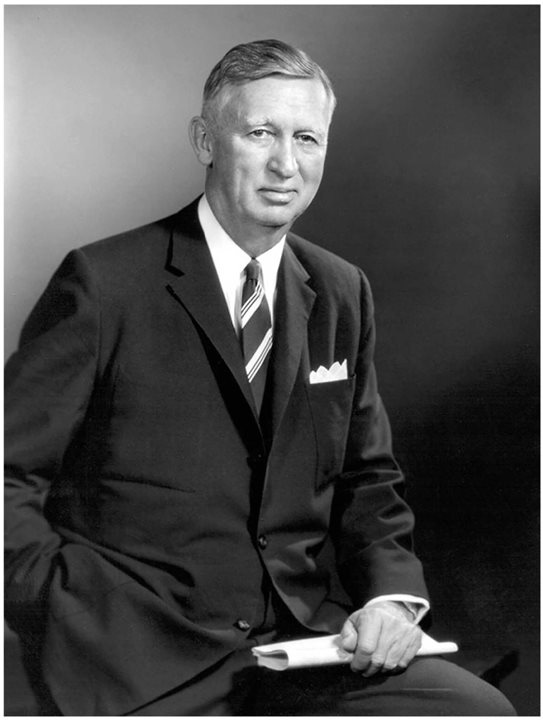
Arthur J. Gallagher/1892-1985/Founder, Arthur J. Gallagher & Co.
W hen The Gallagher Way was published in 1996, it told the story of a remarkable company. But the story was far from over, and the pace of the tale picked up considerably. At the end of 1995, Arthur J. Gallagher & Co. had about $412 million in revenues. In 2002, it topped $1 billion in gross revenues and was the third-largest broker in the United States, the fourth-largest in the world. In 2003, its gross revenues rose to $1.3 billion. Still, this world-leading company is clearly the same, in its strategy, culture and values, as the company whose humble beginnings were described in 1996. This book includes two volumes. Volume I is unchanged from the first publication. Volume II tells the rest of the story. At least so far
T he story of Arthur J. Gallagher & Co. is, in a very real sense, the story of its people. The people are the engine that drives this company, and each of them is an important part of this story. Only a relatively few people can be mentioned by name, but they represent the contributions and the efforts of all the thousands of Gallagher employeespast, present and future. Arthur J. Gallagher & Co. truly values the commitment of all its people, for this is a company that believes strongly that, Our most important assets go up and down the elevators every day.
Chapter 1
The Immigrant Dream
Give me your tired, your poor, your huddled masses yearning to breathe free.
Emma Lazarus, The New Colossus, plaque on the Statue of Liberty, New York
During the last half of the 19th century, more than 2 million men, women and children fled famine and poverty in Ireland to settle in the United States. Too little is known about most of these travelers, or about immigrants from other countries and in other times. Their individual stories of courage and faith are lost, leaving only the general sense of a country settled by people who were willing to take chances, who believed in themselves, who saw a brighter future and pursued it across oceans and continents. One of these Irish immigrants was a young boy named John James Gallagher, who became the father of Arthur J. Gallagher. John, who was called Jack, made the journey to America all alone, although he was no more than 10. Jack probably came to the United States in the 1860s or 1870s. This was years after the great potato famine of the middle and late 1840s, but Ireland was still a very poor country, with little to offer its younger sons. Many of them decided to take their chances in the brave New World. When Jack said goodbye to his mother in Limerick, Ireland, both of them knew they would never see each other again. In a drama acted out millions of times in all corners of the world, he turned away from his past and sailed off to what he hoped would be a better future. His grandsons later believed that the courage and self-reliance their grandfather had shown in coming to America became an important part of their charactersand of the character of the company that their father went on to establish.
Little is known about the facts of Jacks emigration and his early years in his new country. One version of the story says that young Jack made the trip from Ireland to Boston, then traveled on to Chicago in search of his brother. When he arrived in Chicago, though, the brother had died or moved away. The Irish neighbors took in young Jack, but he missed his mother and wanted to go home, so the neighbors gave him money for the return passage. However, when the boy was standing at the harbor in Boston, ready to board a ship for Ireland, he remembered that he had been seasick all the way over. He decided he didnt want to do that again, and he went back to Chicago.
According to another story, Jack came to live with his brother, who was a police officer in New York. The older brother had left Ireland several years earlier, so when the younger brother walked into the precinct house unannounced, the older brother didnt recognize him. The youngster piped up, Dont ya know me? Im John James.
Yet another version is that Jack came to Chicago to live with a cousin who worked in a shoe store on Lake Street. The cousin had written to his relatives in Ireland, telling them of the wonders of his new home, and young Jack decided to see it for himself.
As a young man, Jack became a salesman, beginning a Gallagher tradition of sales. In fact, decades later his grandsons, owners of one of the largest insurance brokerage companies in the world, would refer proudly to themselves as peddlers.
Jack Gallagher was an impressive salesman, with a certain amount of wanderlust. A photo shows him in Dallas in the 1870s, for example, and he also spent time in Salt Lake City.
His experience in Salt Lake City showed his keen understanding of the importance of knowing your customer. He was selling zithers, and he discovered that it was very hard for an Irish Catholic immigrant to sell zithers to the largely Mormon population of Salt Lake City. So he became a Mormonand sold a lot of zithers. Later, when he left Salt Lake City, he converted back to Catholicism.
Eventually, Jack Gallagher settled in the large Irish community on the West Side of Chicago. He married Mary Fitzpatrick, a schoolteacher whose ancestors had come from Virginia to Kentucky to Illinois. Jack and Mary became the parents of Gertrude, Daniel, Alice and their youngest child, born on December 23, 1892, whom they named Arthur James.
Next page
